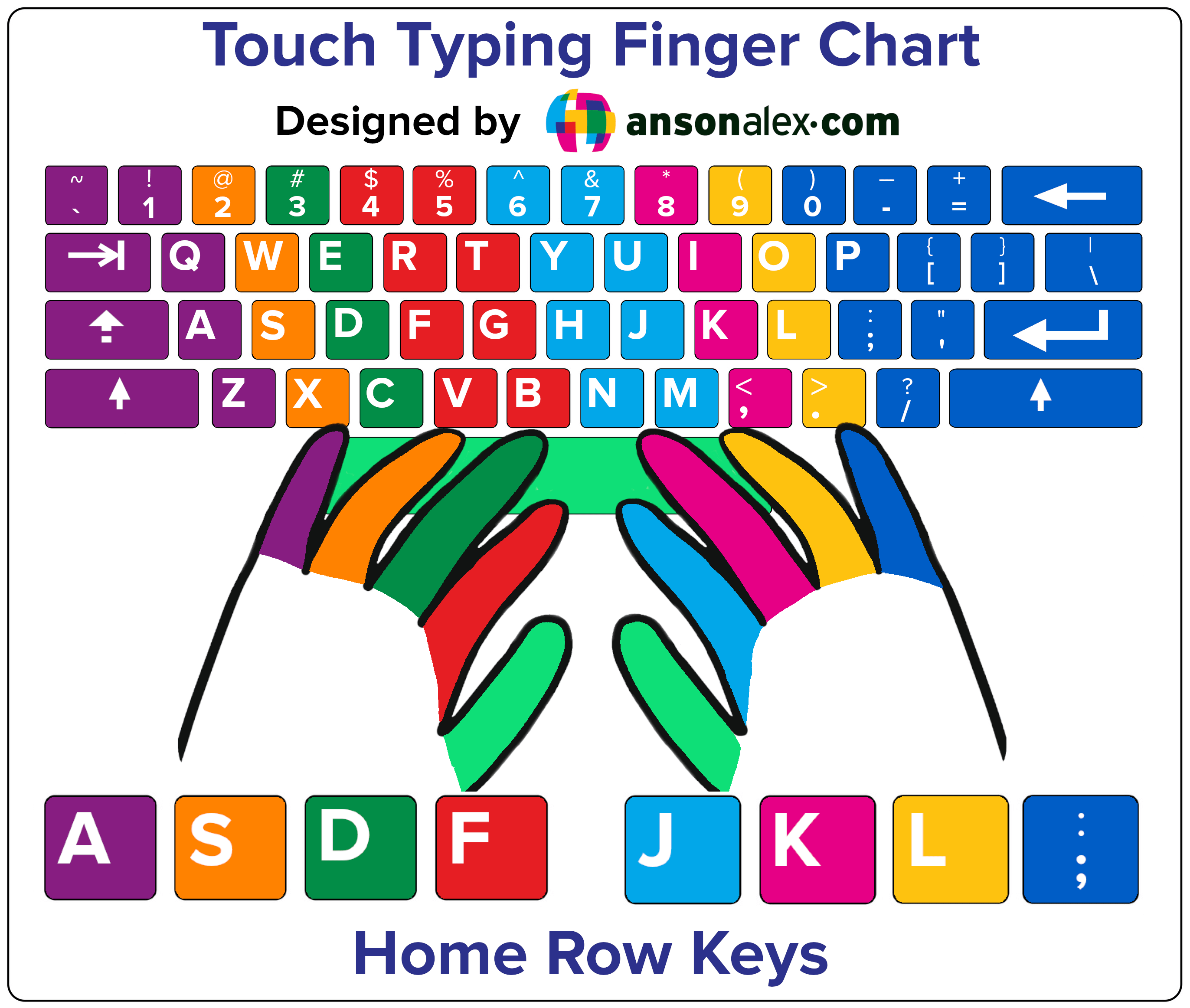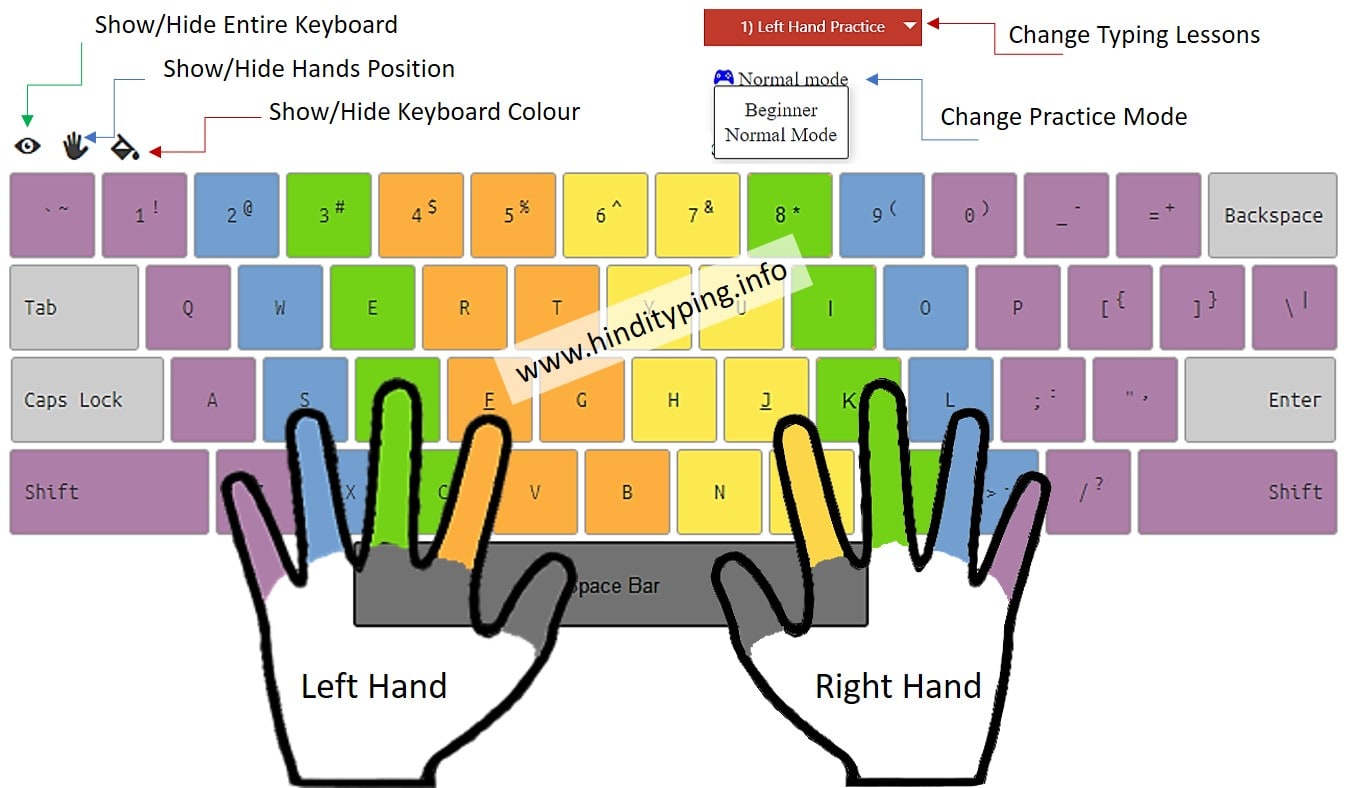

In other words, our brains are always ready for new skills. While that amount of time applied to typing practice might seem much too daunting, neuroscience research suggests that our brains don’t develop based on an inherent set of preprogrammed patterns. In his book ‘Outliers’, he says “It takes 10,000 hours to master anything.” 10,000 hours translates into 416 days, or over a year of your life-if you practice 24 hours a day!
#Touch typing finger placement how to
People often quote Malcolm Gladwell’s ideas on how to make something a habit. Key ingredients need to be a successful touch typist – Motivation and concentration It is recommended to use a cover to cover the keys to build up a repetitive routine and to boost your confidence when touch typing It may feel awkward at first since our pinky fingers aren’t always strong, but with practice, it will feel more natural. The right pinky is responsible for the return, shift, and delete keys, and the left pinky is for the shift, caps lock, and tab keys. Try to imagine vertical dividers around each finger. This is called “touch typing.” Essentially, each finger is responsible for the keys just above and below the home row key it sits on. With your fingers positioned on the home row, you’ll train your hands to reach all the other keys without having to look.Let the rest of your fingers on each hand fall on the remaining keys in the home row (D, S, and A for the left hand K, L, and the “ ” symbol for the right hand). Many keyboards have a little raised tab on those letters so you can orient your fingers without looking. Place your left and right pointer fingers on the F and the J keys.You want to avoid developing any habits that would cause repetitive stress injury long-term. Keep your elbows bent at a 90-degree angle and try to expose your shoulders, arms, wrists, and elbows to as little strain as possible.


Set yourself up for success by putting your body in the proper position for comfort and avoiding injury.įollow these seven steps to improve your typing posture and positioning: You probably know roughly where the keys are located on the keyboard, but the goal of improving your typing skills is to do it without looking at the keys. the mechanics of recording it in electronic format. This frees up cognitive attention and processing power for the content of the task, so writers can focus on the work they are producing vs. In addition, when you type looking at the screen, you are able to catch errors faster. With muscle memory, you can type at a much faster speed. By doing so, your muscles will memorise the movements and even key patterns.įor example, when you type frequently used combinations such as “the”, your motor system will pick up on this. Once you have the hand positions down, you can practice touch typing – typing without looking at the keyboard. Your thumbs should either be in the air or lightly touch the spacebar key. The right-hand pinky goes on the key, and fingers rest on the J, K, L, and keys. Starting with your pinky on the A key, your left-hand fingers rest on the A, S, D, and F keys. The first key to learning to type is learning the correct hand position.
#Touch typing finger placement skin
Repetition and routine, posture, home keys, covering keyboard with skin The things which make a successful typist are:

Many jobs in the modern world of work now require quick typing skills, but with advances in technology that’s set to become even more important. It can not only help them with their school work but can also set them up with an advantage in later life when it comes to exploring job opportunities. Typing is something that is becoming more and more prominent nowadays and remains a foundational life skill so getting your child to learn this skill properly is extremely necessary and will be of benefit to them for the entirety of their life. You are using all your 10 fingers, and each one is in charge of a section or a column on the keyboard and it all starts with the home row. Touch typing is a technique that creates a structure where you have to place different fingers on specific areas on your keyboard.


 0 kommentar(er)
0 kommentar(er)
